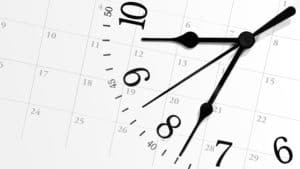Encourage Lifestyle Modifications So the End of Daylight Saving Time Doesn’t Get the Better of Patients

November 13, 2014
The extra hour of time that we all grow accustomed on a yearly basis to from late spring to early fall is officially no more. November 2nd marked the end of Daylight Saving Time, and with that, the days have once again become strikingly shorter.
Though people go through this process every year, that doesn’t mean it’s not still difficult to deal with the adjustment. Shorter days with fewer hours of sunlight can have a dramatic impact on daily schedules, as all the tasks that normally need to get done have to somehow be condensed. The result is a strong feeling of being overwhelmed. This is particularly troubling for people that like to exercise outdoors when the sun is still out, as the abridged days make this very tough to accomplish.
In addition to the overwhelming feeling of having to get things done more quickly while still finding the time to squeeze in exercise is the psychological effect of shorter days. Seasonal affective disorder (SAD) is a type of depression that usually starts with the end of Daylight Saving Time and leads to depleted energy and moodiness. About 3% of Americans experience SAD every year, and another 15-20% are so affected by the lack of sunlight that they seek out some treatment.
Regardless of how difficult the adjustment to shorter days is, the end of Daylight Saving Time somehow affects nearly everyone. This can mean losing all the hard work that was put in from regular exercise over the warmer months or more stress from not being able to cope with the shorter days. For patients that experience these problems to any degree, we recommend offering the following advice:
- Exercise first thing in the morning with the extra hour of early sunlight
- Alternatively, for those who have difficulty staying awake with the darker evenings, try exercising later in the day to keep energized until bedtime
- For those who normally exercise outdoors and who can’t do so safely with the shorter days, try exercising indoors or joining a gym
- Consider cross-training alternatives like swimming or cycling
- Create a new workout plan for the shorter days and stick with it; find a friend to be a workout buddy to help stay motivated
- Adjusting the number of days for working out doesn’t hurt if the same level of intensity and time are held up, so there’s freedom to modify accordingly
- Spend a lot of time in the sun, which will help the body’s clock adjust
- For SAD and those affected by the lack of sun, light therapy is very helpful; use a light box or other forms of extra lighting to extend light the evening
The shorter days that we’ll experience for the next few months can really wreak havoc on certain people’s lives, but that doesn’t mean steps can’t be taken to prevent this. CAM Physical Therapy and Wellness Services LLC, located in Laurel, Hyattsville and Glenn Dale/Bowie, MD, is happy to help patients with additional exercise tips or for any other aches or pains they may be experiencing. Call 301-853-0093 to schedule an appointment or click here for more information.